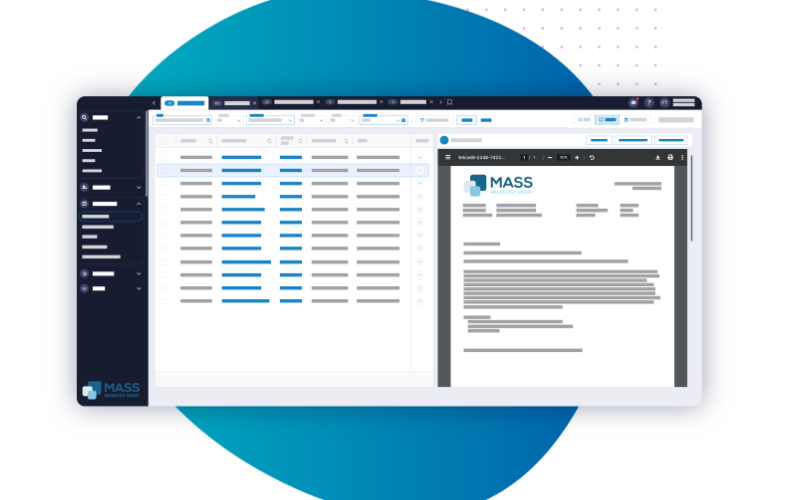Maximizing Efficiency With RIS Radiology Information Systems
RIS Radiology Information Systems (RIS) are computerized systems used to manage the information associated with radiology services, such as patient registration, ordering, scheduling, and reporting. RIS systems provide a comprehensive view of patient information. And allow radiologists, physicians, and other healthcare providers to access and share data in a secure environment. RIS systems also streamline workflow and support data analytics to improve patient outcomes.
What Is RIS Radiology Information System?
RIS Radiology Information System is a computer-based system used to manage the information associated with radiology services. It is used to store and access patient information and to facilitate communication between radiologists, physicians, and other healthcare providers. RIS systems allow users to capture and organize information about radiology services, including patient registration, orders, scheduling, and reporting. It also provides a comprehensive view of patient information, allowing healthcare providers to access and share data in a secure environment.

How Does RIS Radiology Information System Work?
RIS Radiology Information System works by capturing and organizing information related to radiology services. The system stores patient information and allows users to manage patient registration, orders, scheduling, and reporting. The system also supports communication between radiologists, physicians, and other healthcare providers, allowing them to access and share data in a secure environment.
Tips For Implementing RIS Radiology Information System
When implementing RIS Radiology Information System, there are several important tips to keep in mind. First, it is important to choose a system that meets the needs of your organization and is easy to use. Additionally, it is important to ensure the system is secure and compliant with relevant regulations. Finally, it is important to provide staff with adequate training and support to ensure a successful implementation.
Types Of RIS Radiology Information System
- Web-Based RIS: This type of RIS is an online platform that stores and manages medical imaging information. It helps medical professionals to view, access, store, and share patient data more efficiently.
- Cloud-Based RIS: This type of RIS is a cloud-hosted platform that stores and manages medical imaging information. It helps medical professionals access, store, and share patient data more efficiently.
- Enterprise RIS: This type of RIS is a comprehensive system that stores, manages, and stores medical imaging information. It helps medical professionals access, store, and share patient data more efficiently.
- Mobile RIS: This type of RIS is a mobile solution that stores and manages medical imaging information. It helps medical professionals access, store, and share patient data more efficiently.
Benefits Of RIS Radiology Information System
RIS Radiology Information System provides numerous benefits to healthcare organizations. It streamlines workflow and improves patient outcomes by providing a comprehensive view of patient information. Additionally, it supports communication between radiologists, physicians, and other healthcare providers, allowing for more efficient care and improved patient experience. Finally, it supports data analytics, allowing healthcare providers to identify trends and make evidence-based decisions.
Challenges Of RIS Radiology Information System
While RIS Radiology Information System provides numerous benefits, there are also some challenges associated with its implementation. These include the cost of implementation, the time required to train staff, and the difficulty of integrating the system with existing systems. Additionally, there is the RISk of data breaches, which can lead to loss of sensitive patient information.
Best Practices For Using RIS Radiology Information System
When using RIS Radiology Information System, there are several best practices to keep in mind. First, it is important to ensure staff are adequately trained to use the system. Additionally, it is important to ensure the system is secure and compliant with relevant regulations. Finally, it is important to regularly review and update the system to ensure it is up to date and functioning properly.
Security And Privacy Considerations Of RIS Radiology Information System
When using RIS Radiology Information System, it is important to consider security and privacy considerations. The system should be secure and compliant with relevant regulations. Additionally, it is important to ensure the system is encrypted and user access is limited to authorized personnel. Finally, it is important to regularly review and update the system to ensure it is secure and compliant.
Conclusion
RIS Radiology Information System is an essential tool for managing radiology services. It provides numerous benefits, including improved workflow, enhanced communication, and data analytics. However, there are also some challenges associated with its implementation, such as cost, time, and data security. When using RIS Radiology Information System, it is important to keep best practices in mind and consider security and privacy considerations.

Justin Vincent is an experienced writer and web designer with a passion for helping others tell their stories. He is the founder of www.justinforce.info, a website designed to help people reach their goals through creative and meaningful content. He has also worked for a number of well-known magazines, including Cosmopolitan, Esquire, and GQ. He enjoys exploring the world and learning from different cultures, and he loves to bring a unique perspective to his work. He is an advocate for social justice and is always looking to challenge the status quo. Justin believes in the power of storytelling, and he is committed to helping others share theirs.
